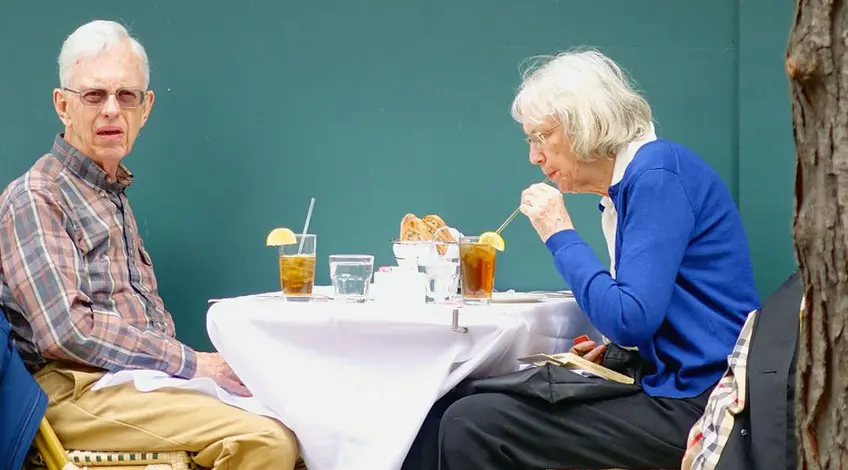 Image by Ed Yourdon's flickr. https://www.flickr.com/photos/yourdon
Image by Ed Yourdon's flickr. https://www.flickr.com/photos/yourdon
Aging New Yorkers’ Struggles to Find & Keep Homes
For senior renters, there is the ever rising cost of renting and of course, the difficulty of qualifying as a renter. Since most seniors, especially those over the age of 85, are no longer working, qualifying under standard rental regulations is simply impossible. A 2013 study by the Center for an Urban Future reported that the median income for New Yorkers over the age of 65 is $18,300 and for the city’s rising population of senior immigrants, the medium income is only $9,900. While seniors in market rent units are evidently most at risk, even seniors with a coveted rent controlled or stabilized apartment have reason to worry.
In 2014, New York City had approximately 27,000 rent-controlled apartments. According to the NYC Rent Guidelines Board, by definition, in order for an apartment to be rent controlled “the tenant (or their lawful successor such as a family member, spouse, or adult lifetime partner) must have been living in that apartment continuously since before July 1, 1971.” This means that the vast majority of the city’s rent-controlled units are now occupied by seniors. Of course, as real estate prices soar, the pressure to move rent-controlled tenants out continues to rise. Reports of landlords and developers attempting to push out, force out and even buy out rent-controlled tenants have become commonplace. Older tenants in one of the city’s more than one million rent-stabilized units are also under pressure. In recent years, a growing number of apartments have been priced out of the rent-stabilized category. Fortunately, a 2015 rent freeze on rent-stabilized apartments has enabled residents to breathe at least a temporary sigh of relief.
Homesharing
On the long-running NBC sitcom, "The Golden Girls," moving in with older roommates is presented as a fun and affordable housing option for seniors. The show, set in the Miama home of widow Blanche Devereaux, brings together four women in their late 50s to mid 80s. It’s implied that a combination of loneliness and financial need resulted in the women’s unusual housing arrangement and in many respects, the same motivations hold true for many seniors in real life but with one notable difference. While the women on "The Golden Girls" met through an advertisement posted on a bulletin board at a local grocery store, many senior roommates in real life are matched through agencies.In New York City, the New York Foundation for Senior Citizens has been running a homesharing program for several decades, and there is nothing random about the program’s approach to matching roommates. The organization asks would-be hosts and guests to complete a survey and uses a database to compare candidates on 31 different “lifestyle objectives.” In addition to the algorithm, foundation staff interview all potential hosts and guests and attend “matchmaking” meetings to ensure their proposed matches are appropriate. Hosts and guests are also asked to sign a written agreement prior to the move in date.
Seniors and the Sharing Economy
Permanent roommates are not the only way that older New Yorkers are choosing to battle rising rents, dwindling affordable housing options, and soaring taxes and coop fees. An Airbnb study found that 10 percent of Airbnb hosts worldwide are over the age of 60 and among this group, 56 percent are retired and 49 percent live on fixed retirement incomes. As is the case worldwide, older Airbnb hosts constitute a significant percentage of hosts in New York City.Marie, who is 73 and lives in a two-bedroom coop in the East Village, became a host on Airbnb in 2010. “I didn’t realize it at the time, but I was on the cutting edge—that’s when Airbnb was just arriving in New York,” she explains, “But I was also living in Alphabet City in the early 1980s, so I guess I like to do things before they get too popular!” Marie, who would not use her last name due to concerns about the city’s and state’s ongoing crackdown on Airbnb hosts, said that she continues to rent out her spare room but one week per month. “I charge $150 per night, and the money helps me cover my coop fees,” said Marie, adding “Some of the new residents here care more about upgrades than they do about higher fees and quite frankly, they just don’t care that they’re living in a building with residents on fixed incomes. Fortunately, no one in the building cares that I am on Airbnb, and one younger couple downstairs has even helped get the keys to guests when I’m out of town.”
The Future of Housing for Seniors
From homesharing to renting out a spare room on Airbnb, older New Yorkers continue to find ways to remain in the city, but over the coming decade, the housing crisis for seniors is expected to grow. Even with the city’s Senior Affordable Rental Apartments (SARA) program, which resulted in the construction and renovation of 1,087 apartments for very low-income seniors in 2015, finding safe, accessible and affordable housing for seniors will no doubt continue to dominate the city’s affordable housing agenda. To put the problem into perspective, there are currently over 200,000 low-income seniors on the Department of Housing and Urban Development waitlist—a waitlist that is an estimated to be 11 years long.

 6sqft delivers the latest on real estate, architecture, and design, straight from New York City.
6sqft delivers the latest on real estate, architecture, and design, straight from New York City.
